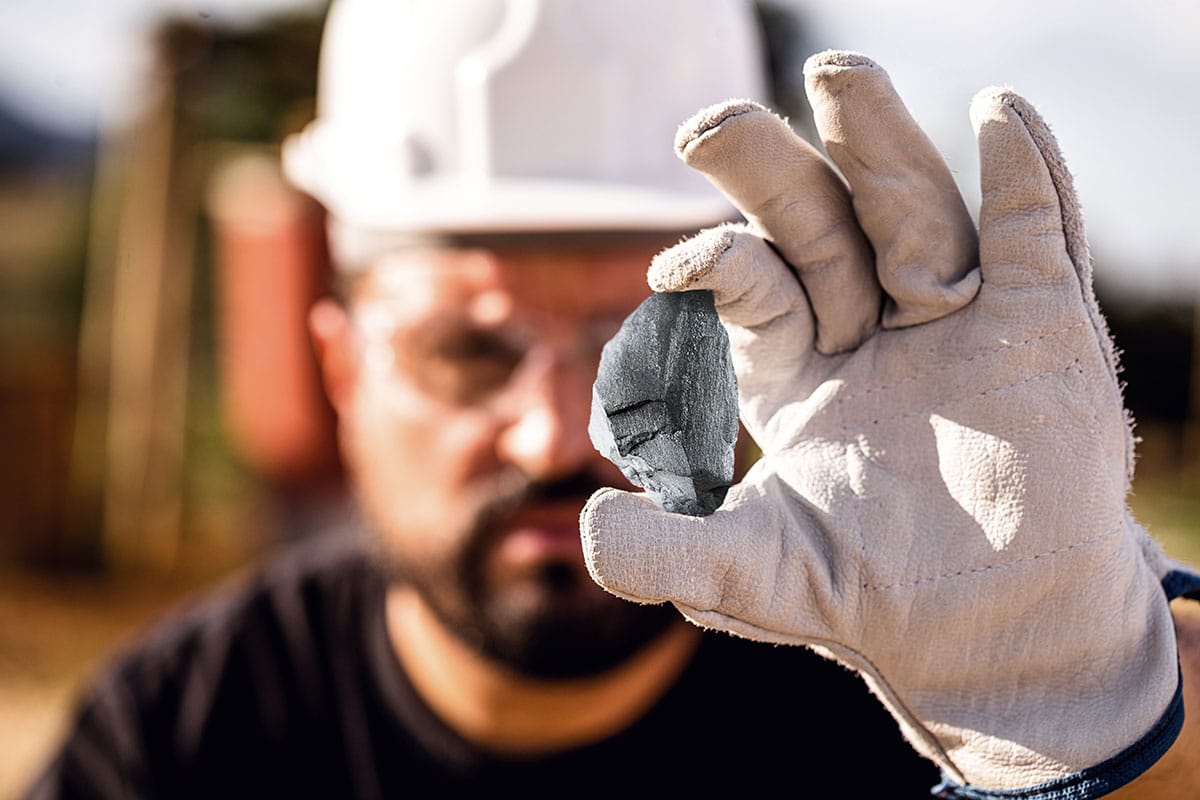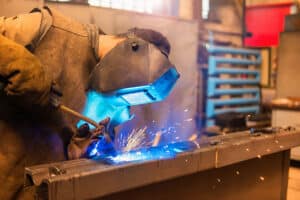Do you have welders on your team? If so, both you and them should know the dangers of manganese overexposure, and how to protect yourself from it.
In this article, we’ll discuss manganese, where it occurs, how it affects workers, OSHA’s requirements surround it, and how to stay safe while using it.
Let’s break it all down.
What is Manganese?
Manganese is a trace element necessary for the normal development and proper body functions across the life span of all humans and mammals.
The element regulates many enzymes throughout the body. Small amounts of manganese are added to steel, such as carbon steel and steel alloys, to improve its workability at high temperatures.
So, what makes it dangerous for workers…namely welders?

Exposure in the Workplace
Manganese exposure in the workplace occurs when its inhaled or orally ingested.
Welders in industries such as construction, manufacturing, transportation, mining, agriculture, and pipe-fitting are at a higher risk of overexposure to manganese. That overexposure can lead to adverse health conditions, such as lung, liver, kidney, and central nervous system damage. It also puts male workers at higher risk of infertility.
Prolonged workplace overexposure to concentrations more than one milligram per cubic meter (mg/m3) has been associated with an increased risk of neurological disorders and the development of a form of Parkinson’s Disease known as “manganism.” In fact, a 2017 study published by the National Centre for Biotechnology Information to determine whether the parkinsonian phenotype prevalent in welders is progressive, and whether progression is related to degree of exposure to manganese (Mn)-containing welding fume, showed that parkinsonism was the predominant phenotype among 15 percent of the workers.
Furthermore, overexposure to manganese fumes can also lead to both Wilson’s disease and pneumonia.
So, why are welders at higher risk?
Well, they’re more vulnerable to manganese overexposure due to inhalation of dust particles created during welding & grinding operations. And, they’re placed at even higher risk when there is a greater degree of enclosure – especially in poorly ventilated areas. Additionally, welders exposed to manganese-containing fumes generated by electric arcs and thermal torches are at an even greater risk of manganism.
Depending on the levels of manganese exposure, it can take anywhere from a few short months to several years for you to discover signs of manganese-related diseases.
OSHA & ACGIH Requirements
As with most any toxic element, OSHA regulates manganese, and provides guidance for those using it in the workplace.
Currently, OSHA’s permissible exposure limit (PEL) for manganese compounds, including manganese fumes, is 5 milligrams per cubic meter of air (5 mg/m3)(1). This PEL is a ceiling limit, meaning that the exposure shall, at no time, exceed the exposure limit given for that substance.
Additionally, the American Conference of Governmental Industrial Hygienists (ACGIH) Board of Directors adopted two 8-hour time-weighted average (TWA) threshold limit values (TLV) for manganese – one for elemental, and another for inorganic compounds. This action changed the TLV from a TWA limit of 0.2 mg/m3 to 0.02 mg/m3 for inhalable manganese. In addition, a TLV-TWA limit of 0.1 mg/m3 was added for inhalable manganese.
Related Article: Respirator Fit Testing is Required Every Year
How to Protect Your Team from Manganese Overexposure
In most cases, making adjustments to manufacturing processes and engineering controls alone can’t reduce exposure levels to below the occupational exposure limits (OEL).
It’s important, and required, to maintain sound respiratory protection for workers exposed to high level of manganese – especially welders. To do this, you’ll need to choose the proper respirators for each of your team members based on results from air sampling. And, you’ll need to follow the necessary assigned protection factor (APF) as established within OSHA 29 CFR 1910.134.
OSHA requires the employer to implement a written respiratory protection program when respiratory protection is used. Elements of the written program include respirator selection, use, care and maintenance, medical evaluation, training, and fit testing for tight-fitting respirators.
Need help developing and actively maintaining your respiratory protection program? We’re here to help (and we’ll bring the program right to you!). From fit testing and clinical testing, to online respirator medical evaluations and OSHA physical exams, we’ve got you covered.
To get started, just complete the form below, and let us come to you!
***
About Worksite Medical
In most cases, OSHA requires medical surveillance testing, and at no cost to employees.
Worksite Medical makes that program easier with mobile medical testing.
We conduct on-site respirator fit tests, as well as audiometric exams, pulmonary function tests and heavy metal lab work, right on your job site. We also keep accurate, easy-to-access medical records for your convenience. You’ll keep your employees at work, and stay ahead of OSHA inspections.
"*" indicates required fields




